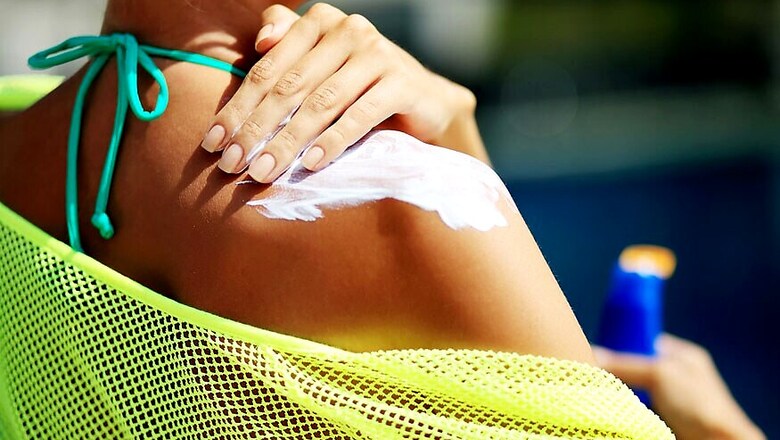
views
As we move into the warmer weather and start thinking about summer, it's also time to start thinking about how to protect ourselves from sunburn. Barbecues with friends, walks in the park, even driving to work.... we need to think about protecting our skin during day-to-day activities and not just when on vacation.
This week marks Sun Awareness Week in the UK, with one of the country's leading cancer charities, Cancer Research UK this year providing insight into 10 sun safety myths to help us all stay safe in the sun all year long.
Myth 1: 'The sun is strongest when it's hottest'
The heat of the sun doesn't come from its skin-damaging UV rays. UV rays are strongest when the sun is highest in the sky. If you want to head outside and enjoy the good weather best to do it when the sun's rays are lower, and the risk of burning won't be as high.
Myth 2: 'You can only burn in the middle of summer'
The sun can be strong enough to burn at other times of the year too. The UV Index can tell you how strong the sun is where you are today, and you can find it on weather forecasts and online. If the UV Index is 3 or above think about protecting your skin.
Myth 3: 'Sun damage always looks red and peely'
Skin doesn't necessarily peel, but if it has turned red or pink in the sun, that's sunburn, and it's dangerous due to the damage the UV rays cause to DNA inside cells. If your skin goes pink but then a tan develops that still counts as a burn. However, you can't always see the damage. Those with naturally darker skin might just feel irritated, tender or itchy skin rather than see a color change.
Myth 4: 'The occasional sunburn doesn't make much difference'
Getting a sunburn doesn't mean you will definitely go on to develop skin cancer, but even one every 2 years can triple the risk of melanoma. If you have been sunburnt in the past, think about what you can do to protect your skin next time.
Myth 5: 'Higher SPF sunscreens are much better than lower SPF ones'
No sunscreen is 100% effective and choosing a higher SPFs doesn't add much extra protection. In fact, it might even encourage you to spend longer in the sun than you should. Choose a minimum of SPF 15 and make sure your sunscreen has 4 stars or more for UVA protection.
Myth 6: 'A 'base tan' will protect me on holiday'
Some people think getting a tan before they go on holiday, from the sun or a sunbed, will protect them from burning once they arrive at their destination. However, a tan offers very little protection against the sun. Some studies have found that tans only offer protection equivalent to using factor 3 sunscreen, and tans from sunbeds could be as low as SPF 1. So make sure you apply minimum SPF 15 sunscreen.
Myth 7: 'Putting sunscreen on once is enough'
Once is not enough, even if it says once-a-day on the label. All sunscreens should be re-applied regularly, and some products rub, wash or sweat off more easily than others. It's also really easy to miss parts of your body so put plenty on; regular applications will help ensure you've got everywhere covered.
Myth 8: 'Sunbeds are a safer way to tan'
There is no such thing as a safe tan, and the evidence is clear: sunbeds cause skin cancer. A tan is a sign that your body is trying to repair the damage caused by UV rays.
Myth 9: 'Sunscreen lasts forever'
Nearly all of us hang on to bottles of sunscreen left over from previous holidays, but when you're packing for your next one check if it is still safe to use, as most sunscreens go out of date. To check look out for a small open jar icon on the bottle, which will show the number of months the product can be used for after opening. And if you do need to replace your sunscreen don't worry about buying the most expensive -- it's the SPF and star rating that is important, not the price.
Myth 10: 'You can't get sun damage through glass'
Being indoors means you are mostly protected from sunburn, but some UV rays can get through glass. If you spend lots of time driving or sitting in a conservatory when the sun is strong, then long-term you might be at risk of damage from UVA rays. If sitting by a window you can protect your skin with clothes and sunscreen with 4 or more stars.


















Comments
0 comment